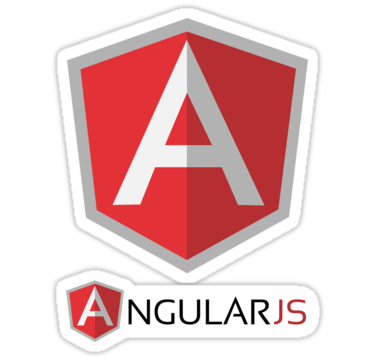One could observe revolution in location-based technologies
during the last several years. The popularity of personal navigation devices as
well as mapping services, for example, Google Maps in both internet and mobile
versions has made many parts of society used to certain location-based ideas
and their utilization.
Without the input of location data these days, no mobile
experience is complete. It is the driving force behind some of the most widely
used mobile apps which are used for geosocial networking, retail, and real
estate searches, navigation and travel, mobile marketing and advertising etc.
Location-based services (LBS) use real-time geo-data from a smartphone to
provide information, entertainment or security. Location-based services tightly
coupled with Google maps and other prominent map service providers via API
integration to offer services optimization.
Use this web link to learn more on location Based Services and
things can be done using it - https://www.optisolbusiness.com/location-based-services #Geolocation
#googlemaps
There are multiple ways in which the LBS (Location Based
Services) can be used. Below mentioned are key aspects and ways to effectively
leverage LBS (Location Based Services) for any business.
Localized Search: Local search is the use of
specialized Internet search engines that allow users to submit geographically
constrained searches against a structured database of local business listings.
Typical local search queries include not only information about
"what" the site visitor is searching for (such as keywords, a
business category, or the name of a consumer product) but also
"where" information, such as a street address, city name, postal
code, or geographic coordinates like latitude and longitude.
City Guides: The increase in the use of mobile phones has made
it easier to provide different applications available to the users `on the go'.
They are designed to be easy to operate. All points of interest/tourist places
are marked on the map. This helps to discover cities in a very individual and
unique way. With this idea, you can easily find all insights of a city - with
GPS and route map to it.
Location-Based Advertising: Location-based advertising
(LBA) is a new form of advertising that integrates mobile advertising with
location-based services. The technology is used to pinpoint consumers location
and provide location-specific advertisements on their mobile devices. There are
two types of location-based services in general: push and pull. The push
approach is more versatile and in the pull approach, users can directly search
for information by entering certain keywords.
Task Management: Task management is the
process of managing a task through its life cycle. It involves planning,
testing, tracking, and reporting. Task management can help either individual
achieve goals, or groups of individuals collaborate and share knowledge for the
accomplishment of collective goals. Effective task management requires managing
all aspects of a task, including its status, priority, time, human and
financial resources assignments, recurrence, dependency, notifications and so
on. These can be lumped together broadly into the basic activities of task
management.
GPS & Map Navigation: Almost all smartphones now
incorporate GPS receivers. This has been driven both by consumer demand and by
service suppliers. GPS or Global Positioning System is a satellite navigation
system that furnishes location and time information in all climate conditions
to the user. GPS provides continuous real-time, 3-dimensional positioning, navigation,
and timing worldwide.
Route Optimization: Route optimization is the
process of using software to find the most cost-efficient route, given specific
parameters such as destinations, fleet size, and costs. Route optimization
solutions can quickly run various scenarios to find the best solution to a
fleet's routing needs. Route Optimization software can quickly test various
'what-if' scenarios and work with business constraints like- vehicle
availability, traffic congestion, suitable rider, etc. to provide the best
possible route.
Delivery Scheduling: Delivery schedule is a
business metric used to calculate the timeliness of deliveries from suppliers.
It is a commonly used supply chain metric and forms part of the Quality, Cost,
Delivery group of performance indicators. All activities that must be carried
out before the goods can be delivered to the customer are considered during the
delivery schedule. Ability to analyze requests for delivery or order by order
to consider the delivery schedule and present options for the delivery
appointment window.
Real-Time Tracking: Real-time tracking is made
possible by the reporting frequency of the real-time GPS tracking device. When
updates are sent frequently, a dispatcher or fleet manager can get an accurate
sense of where a vehicle is and when it’s expected to arrive at its
destination. This feature is available on devices that utilize real-time
tracking. One of the major benefits of GPS tracking is that a business can view
vehicle progress in real-time. Such updates put a business indirect control of
vehicles en route, allowing the company to make better decisions and improve
customer service.
Proof of Delivery: Proof of delivery (POD) is a
method to establish the fact that the recipient received the contents sent by
the sender. Proof of delivery becomes very important when legal and financial
documents are to be exchanged between two parties. In the United States, DHL,
UPS, and FedEx, as well as the US postal service (USPS), provide proof of
delivery. Commercial fleet operators also need to be able to confirm proof of
delivery of goods to their customers.
Task Completion: Task completion updates can
be done real-time once the assigned task is being completed. Using the GPS, the
service provider and end-users can acknowledge the fact of getting the assigned
task completed successfully. This shall make sure of the assigned task being
scheduled and completed on time and as per end-users request.
MarketsandMarkets projects the Location-Based Services (LBS) and
Real-Time Location Systems (RTLS)market to grow from USD 16.0 billion in 2019
to USD 40.0 billion by 2024, at a Compound Annual Growth Rate (CAGR) of 20.1%
during the forecast period.
In addition to the above mentioned, there are other features and
functionalities can be used to its fullest potential when integrated with the
Location-Based Services. To know and learn more on the same, please visit us
at www.optisolbusiness.com



